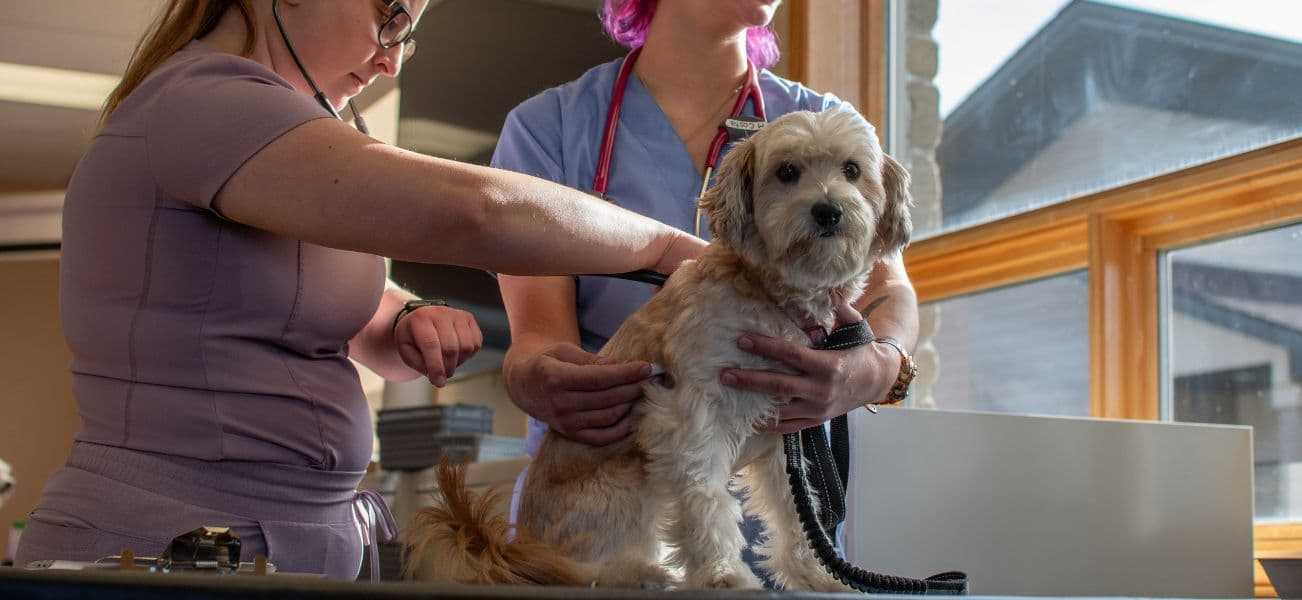
PetSmart Charities of Canada® Funds OVC Researchers Exploring Barriers to Veterinary Care in Canada
Access to CareResearchBarriers to CareCommunity Veterinary Medicine
December 03, 2024
For many people, accessing veterinary care is a straightforward process: whether pets need routine or urgent care, there are clinics nearby and different veterinarians to choose from. For many others, however, veterinary services may be completely inaccessible.
When we think about barriers to accessing veterinary care, money is often the first thing that comes to mind. And while the cost of veterinary care is a very real barrier for many pet owners, there are other challenges affecting individuals and communities across Canada. These may include a lack of nearby clinics or appointment availability, obstacles to building a veterinarian-client relationship, cultural safety issues, limited clinic hours, transportation challenges and language barriers, to name a few.
When access to animal health care is limited, serious consequences can result, including untreated health conditions and prolonged suffering for pets, increased risk of zoonotic diseases, and behavioural problems. These challenges also impact the mental and physical health of pet caretakers who struggle to find the help they need.
Understanding systemic challenges

A new study conducted by researchers from the Kim and Stu Lang Community Healthcare Partnership Program (CHPP) at the Ontario Veterinary College (OVC) aims to better understand these barriers to veterinary care. Led by Dr. Quinn Raush, a postdoctoral fellow with CHPP, and Dr. Lauren Van Patter, professor in community and shelter medicine, the study is exploring how service gaps and barriers to care are being addressed by programs and services across the country. This work is made possible thanks to a generous $240,000 grant from PetSmart Charities of Canada®.
According to Rausch, every community faces unique barriers to care, and identifying where these challenges intersect can reveal significantly underserved pets and their families. Rausch highlights the need for clinics to understand the specific needs of the communities they serve to create truly accessible services.
“Consider a rural client already facing a limited choice of veterinarians,” explains Rausch. “They may also struggle with transportation, food insecurity and financial barriers. Understanding these overlapping challenges helps clinics provide better contextualized care to their clients.”
Rausch notes that low-cost veterinary clinics are often considered to be the solution to inaccessible care. “But if other barriers are at play – such as lack of transportation or previous experiences of discrimination – then that clinic alone may not meet a community’s needs,” they add.
To kick off their study, Rausch and Van Patter launched a national survey to gain insight into services already in place in Canada aimed at addressing barriers to veterinary care. 97 organizations participated, showcasing a range of solutions, from telehealth and pop-up clinics to remote brick-and-mortar facilities. These services are offered by various groups, including for-profit, non-profit and educational institutions that combine student learning with accessible care.

Rausch was encouraged to learn that, among veterinary service providers, broad barriers to care are generally well-understood. They also learned that many organizations have already implemented tools and programs to reduce financial and geographic barriers to care; however, many of these tools fail to address complex or intersecting roadblocks for pet caretakers.
“For example, payment plans can help clients manage costs,” says Rausch. “But requiring a credit check could create another obstacle to a client’s pet receiving care. There is no one-size-fits-all solution. We hope this research can guide and prompt organizations to address as many obstacles as possible in collaboration with the communities they aim to serve.”
Following the survey, Rausch and Van Patter conducted focus groups with respondents. Many service providers identified challenges in assessing the impact and efficacy of their programs and tools.
“We were pleased to see that this gap was widely recognized,” says Rausch. “Measuring the number of users alone cannot determine a program’s efficacy or value. It doesn’t tell us whether people who used the program were happy or whether they got what they needed from it. And we’re missing the voices of people who could not or did not use the program but who still need access to care.”
As a next step, the team is developing and piloting an evaluation tool to help organizations measure their impact more effectively. This initial piloting phase will help Rausch gain a detailed understanding of the challenges organizations face when engaging their communities, as well as the resources needed to advance their efforts.
“We want to build capacity, promote evaluation, and make it easier for organizations to understand their communities’ needs and make the most of their resources,” Rausch explains.

On November 21, Rausch and Van Patter hosted a national workshop, bringing together 30 leading experts and partners on access to veterinary care in Canada with an aim to combine resources, share ideas and co-create a path forward.
“In everything we do, we want to foster collaboration, connection and relationships to address inequities in access,” says Rausch.
Broadening research impacts
Going forward, Rausch and Van Patter aim to extend the impact of their work beyond Canada, seeking opportunities for international collaboration and testing service models used in other countries within Canada’s unique geographical, cultural and regulatory landscape.
They will also use research outcomes to inform curricular development for student veterinarians at OVC.
“This work can help to advance future veterinary leaders’ knowledge in understanding and improving access to care,” says Rausch. “The goal here is to inform system improvements that will ultimately benefit pets, their caretakers and veterinary professionals alike.”
As this research continues, Rausch urges people to practice compassion over judgement.
“Removing blame from made-vulnerable groups and acknowledging the systems that create those barriers allows us to have empathy for each other,” they say. “If we remove judgement, we can create communities where pet caretakers can share resources, trust each other and work together to dismantle inequity.”

.png)